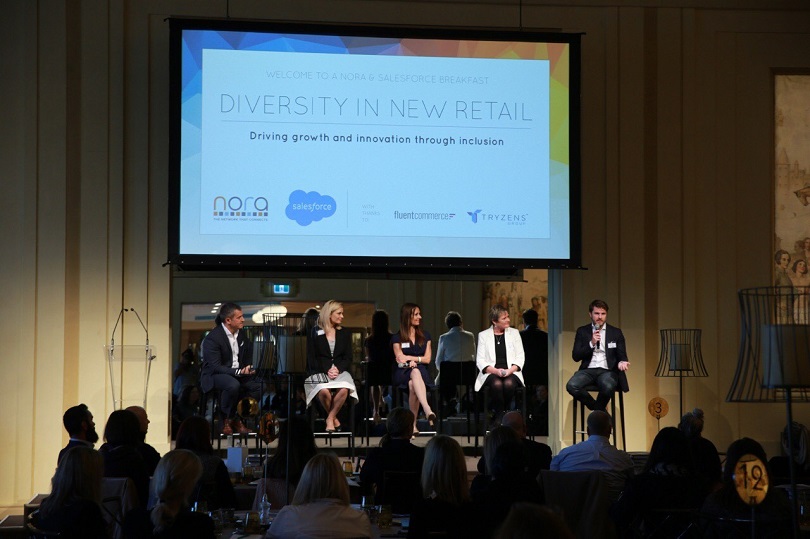Retailers tackle diversity problem

Despite increased awareness and rhetoric around the importance of diversity in achieving commercial success, many businesses have not made significant progress towards this goal.
Some of the retail industry’s biggest champions of diversity, including Paul Zahra, former head of David Jones, Dominique Lamb, chief executive of the National Retail Association, Mark Coulter, chief executive of Temple & Webster, and Anne Hurley, founder and CEO of James & Co, spoke about their own experiences at an industry event in Melbourne last week, alongside diversity expert Sandy Caspi Sable of Satellite Consulting.
The event, organised by the National Online Retailers Association (NORA) and Salesforce, touched on the lack of diversity of gender and sexual orientation at the c-suite and board level, but focused more broadly on the concept of ‘cognitive diversity’, or diversity of thinking, experience and approach, which Caspi Sable said is the way organisations should be thinking about diversity today.
“When organisations talk about diversity, they often talk about gender, age, skin colour and maybe ethnicity, but that is the tip of the iceberg,” she said at the event.
“We talk about these things because they’re visible characteristics, but the problem is they’re only telling you a fraction story of what diversity means…all the ways we’re different from each other.”
Caspi Sable cited research that shows people rate their life experience and thinking style as the two most valuable traits they bring to an organisation, well above visibly divers characteristics like gender.
She said it is critical for organisations to think about gender and racial diversity in order to achieve cognitive diversity, but alone they are not sufficient.
Overcoming bias
But as Caspi Sable pointed out, leaders have little hope of seeing the benefits of diversity in their organisation unless they deliberately encourage inclusion, since most people have a deep-rooted affinity bias, or a tendency to prefer those who look and act like them.
“We are inherently tribal, and what happens when you bring in new tribes? They want to kill each other,” Caspi Sable said.
She said that most people don’t consciously exclude people who don’t look or act like them, but they need to work to consciously include them.
That means leaders need to be aware of their own affinity bias and understand how it impacts their relationships with others, especially when it comes to recruitment, performance reviews and promotions.
The quota debate
Increasingly, organisations are considering how quotas may be used to overcome people’s innate biases in hiring decisions.
“When I joined PwC I was completely against quotas, but I’m a total convert now,” Zahra said at the event.
“I now see why it’s so important because unless something is hardwired into the organisation, you won’t see change. Unless it’s measured, you won’t see change,” he said.
Coulter added that leaders may need to “make a few uncomfortable decisions along the way” if they want to overcome traditional social hierarchies, while Lamb pointed to the success of quotas in Scandinavia to achieving gender equality.
However, she cautioned that businesses should consider the broader implications before setting diversity targets.
“A lot of the time, different leaders that we haven’t seen before aren’t necessarily set up for success. A lot of businesses might put in place a quota, but they have no idea how to manage diversity,” she said.
Comment Manually
You must be logged in to post a comment.

No comments